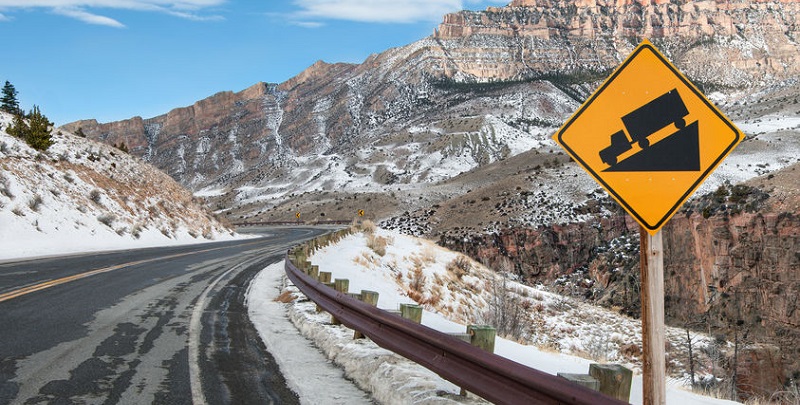From Colorado’s Highway 550 to Wolf Creek Pass, large truck drivers must navigate a variety of geographical layouts and hazards.
Recently we posted some tips for drivers on how to stay safe when driving near large trucks. Most of the responsibility was placed on the motorists, in particular, what drivers should and should not do when sharing Colorado roads with an 18-wheeler. But what steps do truckers need to do to keep the roads safe, especially in the more mountainous areas of the state?
A Lifeline for Colorado Commerce
According to the Colorado Motor Carriers Association, in 2014 there were more than 12,000 trucking companies in the state. Most of these companies were small transportation businesses utilizing small trucks for deliveries, while others depended on the use of 18-wheelers. These companies provided nearly 100,000 jobs in the state. That may seem like a lot, but considering that some 80 percent of Colorado communities depend solely on truck delivery for goods and services, you can begin to understand why there are so many trucks on Colorado roads.
The association noted that in 2010, some 350,000 tons of manufactured goods were transported daily on Colorado roads. That’s a lot of big rigs carrying a lot of weight; operated carelessly, they can be a deadly truck accident waiting to happen.
As a matter of fact, many accidents have happened. According to one trucking resource, truck driving is one of the deadliest occupations in the country. Trucks.com notes that 745 truck drivers were killed in 2015. What makes truck driving in Colorado difficult is the wide array of geographical layouts truckers face; there are flat lands, narrow valleys, and mountains. During the summer, you’ve got roads full of sightseers; during the winter, you are battling not only the elements but also motorists heading to any number of ski resorts.
Colorado Truck Accident Hot Spots
When it comes to dangerous roads, Popular Mechanics did a survey and found that Colorado’s Highway 550, also known as The Million Dollar Highway, is the third-most-dangerous highway in the United States. The highway has no shoulders, and there are no guardrails despite the fact that the road takes drivers up to 11,000 feet above sea level. Another road that can be dangerous is the 1-70 corridor. Not only does I-70 cut through very narrow valleys, but this road is hit with frequent snowfalls and blizzards. And the Colorado Department of Transportation (CDOT) also notes that U.S. 160, known as Wolf Creek Pass, is also extremely dangerous. All of this points to one thing, truckers in Colorado need to be well educated about their surroundings and how to handle a truck in the event of an emergency.
When it comes to Wolf Creek Pass, CDOT has some safety tips for driving the pass, such as:
- Make sure the truck’s brakes are working properly
- Maintain a low speed and use flashers to warn other motorists of your speed
- Never ride the truck’s brakes, which can cause overheating of the brake system and possible brake failure
- Always obey Colorado speed limits
- Anticipate curves and other hazards; this is best accomplished by being familiar with the road
- Be aware of runaway-truck ramps and use them during emergencies.
These tips can also be used in other mountainous areas in the state as a means of saving lives and keeping everyone on the road safe.

